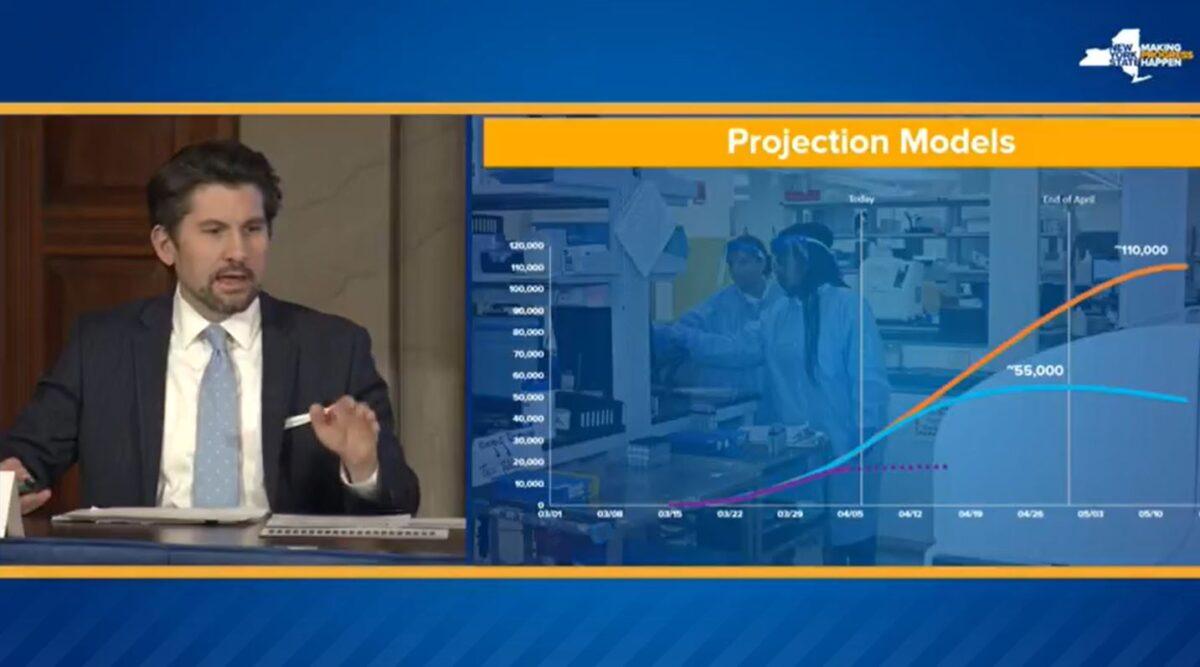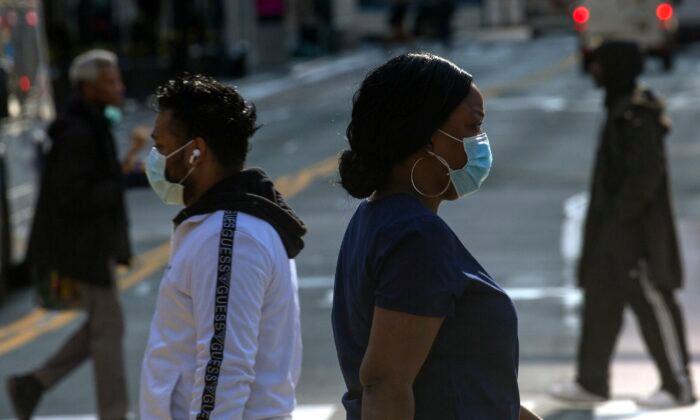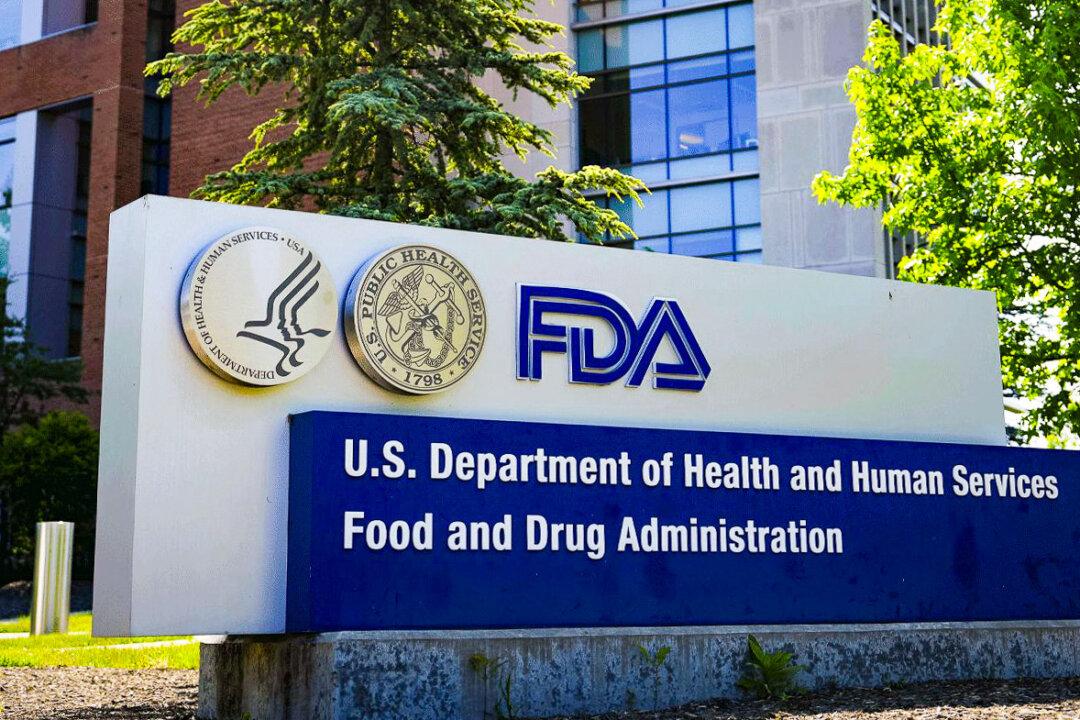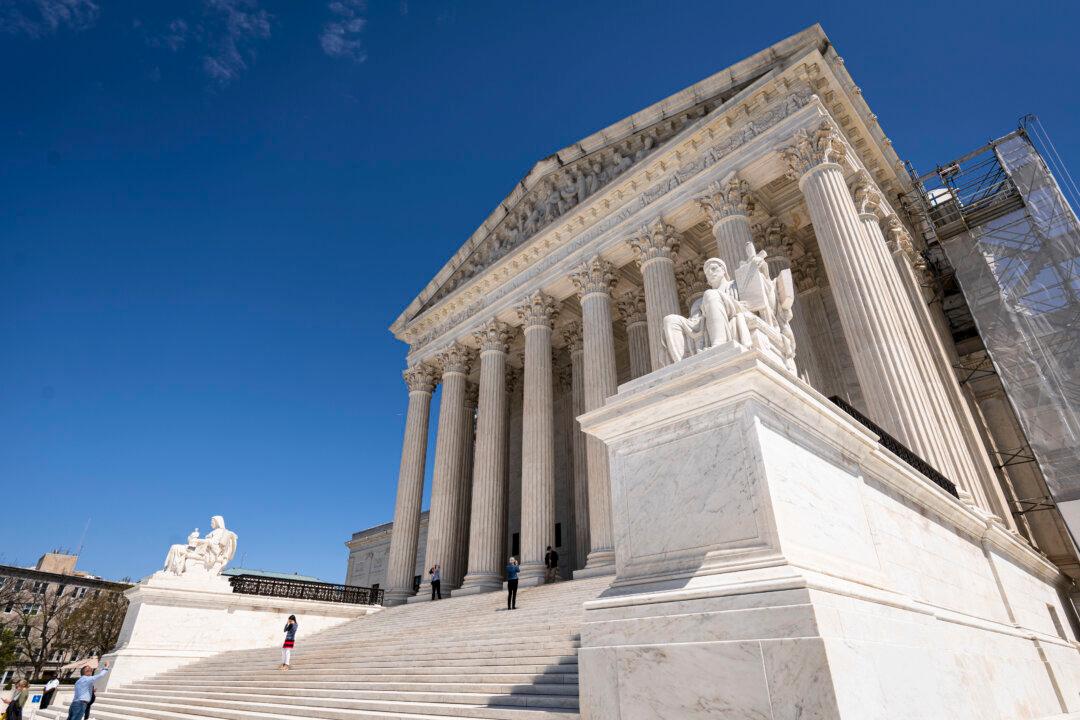The daily deaths in New York from COVID-19 were “effectively flat” for the second day in a row as state officials expressed optimism that the peak of the new disease has arrived.
Projections that once said the state would need up to 140,000 hospital beds and 40,000 ventilators have been severely dialed down as it appears the apex may have arrived at a much lower level.
“The hospital admissions are down, the ICU admissions are down, and the daily intubations are down. Those are all good signs and would suggest a possible flattening of the curve,” Gov. Andrew Cuomo told reporters at a press conference in Albany on Monday.
New York reported an increase of deaths from 4,159 to 4,758 overnight. The increases over the previous three days were: 630 deaths on April 3, 594 on April 4, and 599 on April 5.
State officials also recorded a daily increase in hospitalizations of just 358, or 2 percent, a decrease from recent days; an increase in ICU admissions of only 128, a drop from 395 two days prior; and just 132 new intubations, down from 351 on April 3.
The number of people infected climbed to 130,689, an increase of over 9,000.
The statistics are for April 5. Authorities have been compiling data and releasing it for the previous day at briefings.

New York is by far the most affected state in the nation and has struggled to react to the epidemic. The bulk of the cases are in New York City, where leaders were telling members of the public as late as March to continue going out to eat as other states implemented strict measures.
The belief is informed by the robust dataset that officials have compiled, Jim Malatras, president of the State University of New York’s Empire State College, said at the press conference. “We are, potentially, at the apex or beginning to be at the apex,” he said.
Social distancing measures led to the lower rate of hospitalizations and they must stay in place, officials said.
Cuomo said it didn’t matter whether the peak has arrived because the healthcare system is already at maximum capacity today. Ventilators are being moved from upstate hospitals to downstate hospitals, along with personal protective equipment like masks, while the U.S. military is bringing the Javits Center in Manhattan online to help New York City hospitals handle the influx of cases.






Friends Read Free